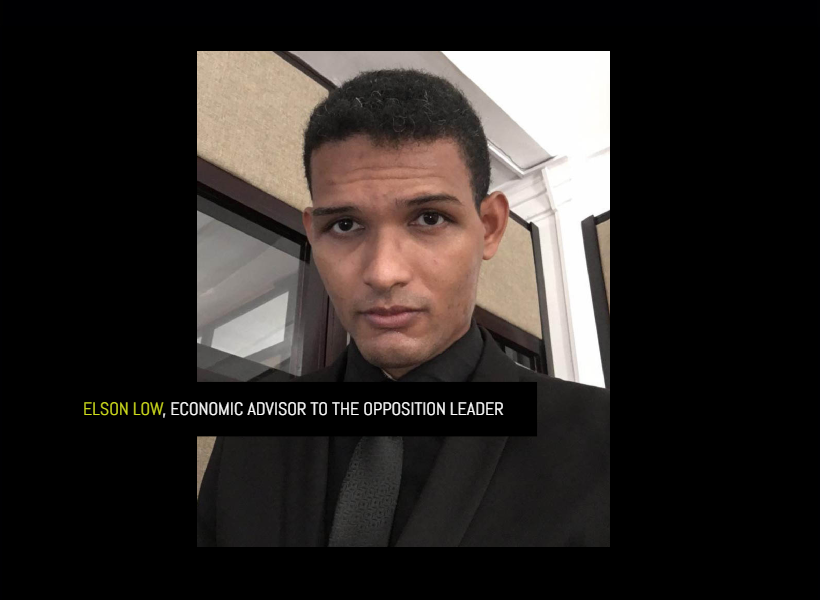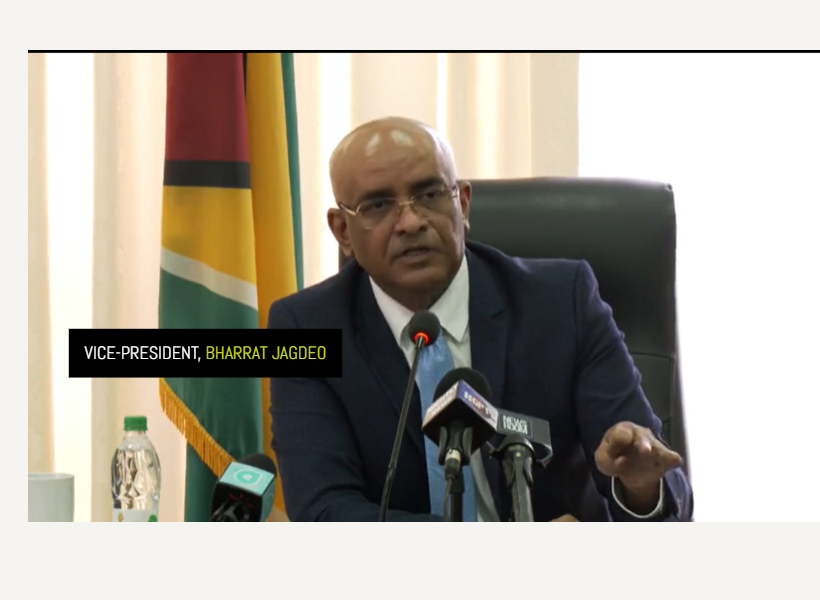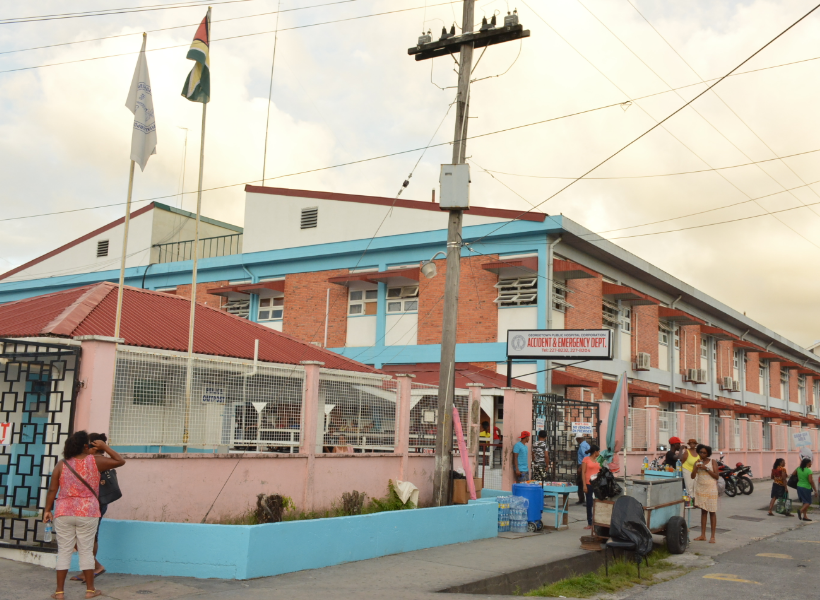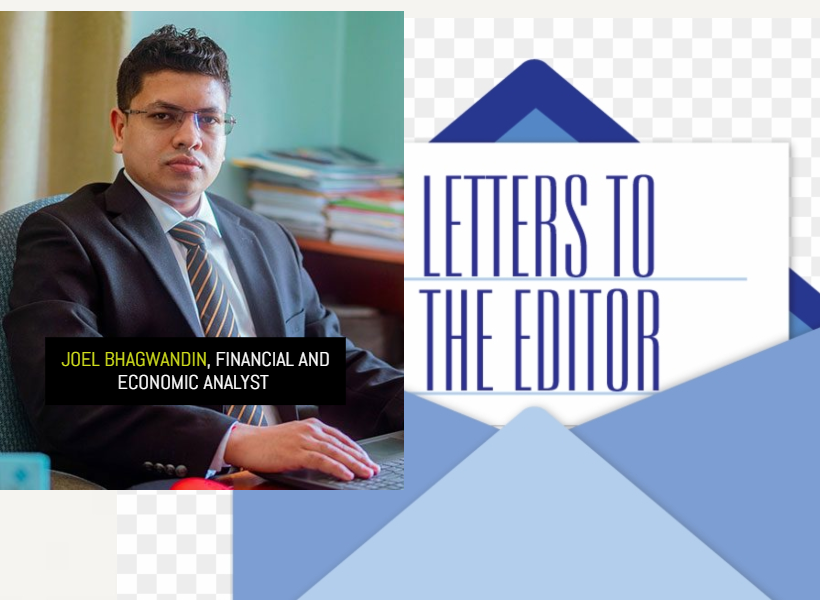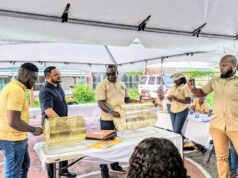Dear Editor,
In reference to the aforementioned subject matter, on May 3, 2023, Justice Sandil Kissoon handed down his ruling in favor of Melinda Janki [et.al](http://et.al “”). The Proponents have fiercely criticized the position of the government to appeal the High Court’s ruling. The underlying source of this long-standing contentious issue emanated a few years ago from a group of activists (some of whom are involved in the said court case), and a certain newspaper publisher who argued that the oil companies are required to have “unlimited” insurance coverage. The problem with this is that in the insurance world, there is no such [thing] as “unlimited” insurance coverage or guarantee.
With this background in mind, let us now objectively examine the court’s ruling / judge’s decision, in tandem with the referenced Environmental Permit (renewed) No. 20160705-EEDPF―issued by the Environmental Protection Agency (EPA), and the Attorney General’s press release that followed.
Excerpts from Justice Sandil’s Decision
Paragraph six states…” The Court found that ESSO was never in doubt as to what its liabilities are as captured under Condition 14 of the Environmental Permit (Renewed) for the Liza Phase 1 Petroleum Production facility as the stipulations were neither unusual, unique or unauthorized. It was simply as a matter of law, fact, and consequence the norm that prevails which bound ESSO as singularly and exclusively responsible for all liabilities without restriction, implied or expressed, from its operations at the Liza Phase 1 Petroleum Production facilities, in the Stabroek Block offshore Guyana. It included all activities connected therewith as stipulated in condition 14 of the Environmental Permit ( Renewed) No. 201 607 05-EEDPF extending to and inclusive of the transition to Petroleum Production Operations and all activities incidental thereto.”
Paragraph seven states…”Equally, the concomitant financial assurance obligations imposed on ESSO by Condition 14:10 of the Permit (Renewed) in the form of environmental liability insurance together with an unlimited parent company guarantee agreement are but the legitimate corollary flowing from its uncapped and unlimited liabilities arising from an event and pollution as encapsulated in the permit, to provide such financial assurance, in the form of insurance and unlimited parent company guarantees to cover its liabilities.”
Relevant Citation from Condition 14 of the Environmental Permit (Renewed) No. 201 607 05-EEDPF, Financial Assurance and Liability for Pollution Damage
14.1 The Permit Holder is liable for all costs associated with clean up, restoration and compensation for any damages caused by any discharge of any contaminant, including the cost of all investigations into pollution incidents or discharge of contaminants, conducted at the instance of Agency.
14.2 The Permit Holder shall provide and/or declare within a reasonable time following the signing of this Permit a combination of the following forms of financial assurance to cover all its legitimate liabilities under this permit.
a) Insurance in accordance with Condition 14.5 and shall cover well control, and/or clean up and third-party liability on terms that are market standard for the type of coverage;
b) A Parent Company / Affiliate (of Operator and Co-Ventures) CoVs)) undertaking that provides indemnification for liabilities under this Permit.
14.3 The forms of financial assurance shall be guided by an estimate of the sum of reasonably credible costs, expenses, and liabilities that may arise from any breaches of this Permit. Liabilities are considered to include costs associated with responding to an incident, clean-up and remediation and monitoring. The estimation is not expected to address unidentifiable or inestimable costs which may be associated with compensation for loss and ongoing damage to other parties, and which are able to be pursued through civil action.
14.4 Notwithstanding the above, the Agency may require such further forms of financial assurance, and coverage as it considers appropriate.
14.5 The Permit Holder shall have valid and effective environmental liability insurance, of such type and in such amount as is customary in the international petroleum industry, for petroleum operations in relation to this Permit, which insurance shall be procured from an Insurance Company assigned grade A+ by the Better Business Bureau (BBB) or equivalent as deemed appropriate by the Agency, and shall include, but may not be limited to insurance in respect of:
i. Loss or damage to all assets used in the Project;
ii. Environmental damage caused in the course of the Project for which EEPGL will be, jointly and severally, held responsible;
iii. Loss or damage to property or bodily agency suffered by any third party in the course of the Project for which EEPGL is liable to;
iv. The cost of removal of wreckage and clean-up operations required as a result of an accident occurring in the course of permitted activities;
v. EEPGL’s liability to its employees engaged in the Project; and
vi. Any other requirement (s) made by the Agency.
14.6 Notwithstanding Condition 14.5, the Agency may require such further amounts, types, and coverage of insurance as is customary in the international petroleum industry or required by applicable law.
14.10 The Permit Holder must, as soon as reasonably practicable, provide from the Parent Company or Affiliate Companies of Permit Holder and its Co-Ventures (Affiliates) one or more legally binding agreements to the Agency, in which the Parent Company or Affiliate Companies of Permit Holder and its Co-Ventures undertake to provide adequate financial resources for Permit Holder and its Co-Ventures to pay or satisfy their respective environmental obligations regarding the Stabroek Block, if Permit Holder/or its Co-Ventures fail to do so, and to so indemnify and keep indemnified the Agency and the Government of Guyana, against all such environmental obligations regarding the Stabroek Block.
Excerpts from the Attorney General’s Press Statement on behalf of the Government of Guyana
Following the High Court’s ruling, the Attorney General (AG) stated that…” the EPA and the Government of Guyana are of the considered view that the Environmental Permit imposes no obligation on the Permit Holder to provide an unlimited Parent Company Guarantee Agreement and/or Affiliate Company Guarantee Agreement. In this regard, we hold the respectful view that the learned Judge fell into error in his findings.”
The AG further stated that “the EPA and EEPGL spent almost a year negotiating a Parent Guarantee and Indemnity Agreement to the tune of US$2 billion in liability coverage in compliance with EEPGL’s financial coverage in compliance with EEPGL’s financial assurance obligations under the Environmental Permit and the Environmental Protection Act. These negotiations only concluded last week. These negotiations and their material effect were placed before the Court for its consideration, but to no avail.”
Commentary
Having critically examined the High Court’s ruling together with the subject matter Environmental Permit and the Attorney General’s statement on behalf of the Government of Guyana; indeed, there appears to be an unfortunate error in the findings of the High Court’s ruling. To this end, the learned Judge relied, to a large extent, on Condition 14 of the Environmental Permit as the basis for his ruling. However, as illustrated herein, there is no such provision under Condition 14 of the said Permit, wherein it is expressly stated that EEPGL is obligated to comply with an “unlimited” Parent Company Guarantee Agreement. Rather, the provisions set out in Condition 14 speaks to insurance liability amounts that conforms to that which is the norm in the international petroleum industry. In other words, insurance liability coverage that is in keeping with international best practice in the global industry.
Of note, the provisions in Condition 14.3 speaks to “the forms of financial assurance shall be guided by an estimate of the sum of the reasonably credible costs, expenses, and liabilities that may arise from any breaches of this Permit.” Emphasis is placed on the phrase “estimate of the sum of the reasonably credible costs…”. Again, suggesting unequivocally that there is absolutely no provision in Condition 14 of the Permit, or in any of the Conditions in the Permit that implies, or explicitly states that EEPGL must provide coverage for uncapped liability, viz-á-viz, an “unlimited” insurance coverage or parent company guarantee.
Moreover, specific reference was made to condition 14.10 by the learned Judge in his ruling where he stated that the conditions therein imposed upon Esso “unlimited parent company guarantee”. To the contrary, condition 14.10 actually stated that the Permit Holder and its Co-Ventures undertake to provide “adequate financial resources”, which contradicts the ruling of unlimited liability. The terms “adequate” and “unlimited” have very different meanings by definition.
With that being said, the procedure in ascertaining or quantifying the value of the liability insurance or assurance coverage and/or guarantee―is at best a subjective process. This is because in practice, there is no prescribed methodology or formula to do so. Hence, it is precisely for this reason that the Permit did not impose a defined time frame by which such insurance must be obtained and be in place, other than to state, by a “reasonable” time frame. In this regard, due consideration has to be given to all of the other conditions that would have to be complied with by EEPGL as set out in the Permit in relation to minimizing and/or mitigating the potential adverse environmental damages or risks. For example, the safety procedures in place; training; and capacity building in oil spill response; coupled with the requirement for a capping stack in country and the maintenance of a subscription with a manufacturer of the equipment. These are some of the factors that would have to be considered in order to reasonably estimate the amount for the insurance liability.
It is worth noting that prior to the 2010 catastrophic BP oil spill in the Gulf of Mexico which cost BP in excess of US$60 billion in liabilities, the capping stack device was not yet developed. It was after this event that the capping stack was developed which can be placed on top of a well head to control the flow of an emergency or unplanned release of hydrocarbons. The capping stack can be operated remotely to control the flow of oil and gas.
For the layperson’s comprehension, based on an assessment of the risk management framework to mitigate the risks of environmental damages and / or the worst-case scenario of an oil spill, the insurance amount and the premium will reflect the gravity of the risk accordingly. So, if the risk is considered high, then the premium will be significantly higher than if it is considered low-to-moderate. Bearing in mind that the insurance premium which will be treated as part of the operating cost will also have an impact on the profit oil. Consequently, if the cost is considerably high, then this will effectively reduce the profit oil from which the country earns 50 percent in accordance with the fiscal terms of the Production Sharing Agreement (PSA).
Concluding Remarks
Against all of the foregoing, it is the respectful view of the undersigned that the government is in order to appeal the High Court’s ruling. Considering that unlimited insurance coverage or guarantee is unheard of in the insurance world and that it is not provided for in the Permit. Therefore, it will be practically impossible to comply with the learned High Court Judge’s ruling albeit it is a flawed ruling.
Yours sincerely,
Joel Bhagwandin
Public Policy and Financial Analyst

